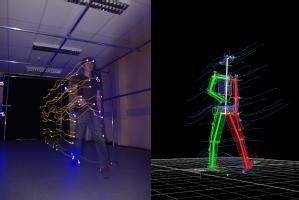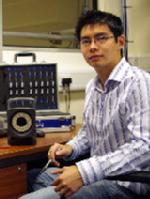Tung Fai Yu
The human gait in digital form
What got you interested in this area of science?
Research in medical physics involves a mix of different subjects, including maths, sciences and electronics. For a long time, I knew I wanted to be in the field of research and development in electronics, because I enjoy designing and making things. During my undergraduate degree, I had a short work placement building electronics equipment to be used in another medical physics project. The project was a fantastic challenge; it really used all the skills I learnt from my undergraduate degree. The design and building required great precision, it was more complicated than anything else I made before, and it was great to work on a ‘real life’ project. I really enjoyed the experience from the project and I decided I would do research in medical physics if I were given the chance.
How is the work you are currently doing relevant to everyday life?
We all take the ability to balance for granted, but scientists still do not know exactly how it is achieved. Currently I am investigating balance and postures during standing, which is medically of great importance. The results from the first part of my research will enable me to develop an electronic system to allow paralysed patients to stand up again by electrically stimulating the leg muscles.
What does your research hope to achieve?
The goal of the project is to mathematically model human balance and to build an electronic system to stimulate muscles using functional electrical stimulation (FES). The system must be efficient so it can prolong the standing period, and work will also be done so the system variables can be directly derived from properties that can be measurable from the patients, for example height and weight.
Briefly, what does the image show?
This long exposure picture is taken during a motion capture trial in the Gait Laboratory. The equipments in the Gait Lab can digitally record movements in 3D, and the data can then be used for analysis. On the left of the image, it shows the trajectories of body segments and joints during a normal walking cycle. The light trials are created by the reflections from special markers placed on the subject. The system uses twelve high speed infra-red cameras (red rings with blue indicators) to track these markers, and the information is then reconstructed digitally as a 3D model on the computer. These equipments enable the visualisation of body segment trajectories, which otherwise is very difficult to measure or visualise by normal photos or video. By using this digital technique, it also allows objective measurements to be made without interfering with the subject’s natural movement, for example it can measure the changes in joint angles during walking.


